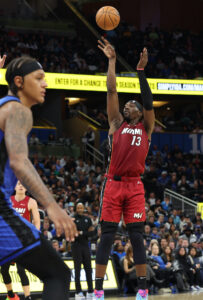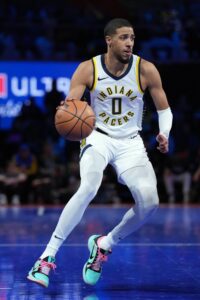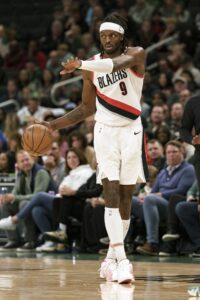The Kings currently hold a top-five seed in the Western Conference, with a pair of former All-Stars leading the way.
Center Domantas Sabonis has averaged 19.9 points, a league-leading 13.0 rebounds, and 8.0 assists in 46 games so far this season while shooting a career-best 61.6% from the floor. Point guard De’Aaron Fox is putting up career-best numbers in points per game (27.2) and three-point percentage (38.0%) while also averaging 5.5 assists, 4.1 rebounds, and 1.6 steals per night.
Neither player was part of the group of 2024’s Western All-Star reserves announced by the NBA on Thursday, however, which shocked head coach Mike Brown, according to Marc J. Spears of Andscape.
“It’s clear to anyone who watches the NBA and Kings basketball that De’Aaron and Domantas should have been selected for this year’s All-Star game,” Brown told Spears. “They are playing at an unbelievably elite level, Domantas establishing historic numbers with his double-doubles and De’Aaron setting a new career mark for three-point field goals. Every year, there are deserving players left off the team but, to me, this is truly a glaring wrongdoing.”
Sabonis and Fox were two of the most notable snubs in the Western Conference, but there’s no shortage of worthy candidates who missed the cut. Jazz forward Lauri Markkanen, Nuggets guard Jamal Murray, Timberwolves center Rudy Gobert, and Rockets center Alperen Sengun are among those who had strong cases for consideration.
Of course, naming the snubs is easier than naming the All-Stars who don’t deserve to be there. It’s a little odd that the .500 Lakers had two players make the game, but LeBron James was voted a starter and Anthony Davis is having a monster year. Karl-Anthony Towns‘ selection was a minor surprise, but the Timberwolves have the best record in the conference, which perhaps warrants more than one All-Star rep. The Warriors are the West’s 12th seed and Stephen Curry‘s shooting percentages are below his career rates, but…he’s still Stephen Curry.
Over in the East, the list of snubs isn’t as long or as egregious. You could make a case for Hawks guard Trae Young, Cavaliers center Jarrett Allen, Raptors forward Scottie Barnes, Heat swingman Jimmy Butler, Magic forward Franz Wagner, and a couple more Celtics (Kristaps Porzingis and Derrick White), but none of those omissions look especially glaring.
Of course, it looks like the NBA will need to name a couple injury replacements in the East, since both Joel Embiid and Julius Randle are currently sidelined. Since the East already has six guards on the roster, the league will likely stick to the frontcourt pool, which could open the door for two players from that group of Allen, Barnes, Butler, Wagner, and Porzingis.
With nearly two more weeks of games before the All-Star break, it’s possible an injury replacement or two will be necessary in the West as well, but that doesn’t appear to be the case for now. Sabonis would likely be first on the list of replacements if a frontcourt player misses the game, which would be a major financial boon for the Kings big man — his contract includes a $1.3MM bonus if he makes the All-Star team.
We want to know what you think. Were there any players that absolutely deserved to be All-Stars who didn’t make the cut? If so, who should they replace? And which two players in the East should be chosen as injury replacements for Embiid and Randle (assuming both are unavailable)?
Head to the comment section below to share your two cents!
 Heat big man
Heat big man  Haliburton is a legitimate All-NBA candidate and would be in line for a
Haliburton is a legitimate All-NBA candidate and would be in line for a 